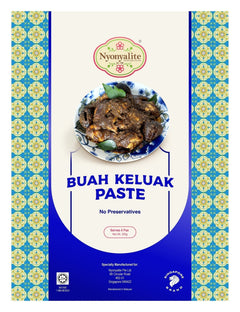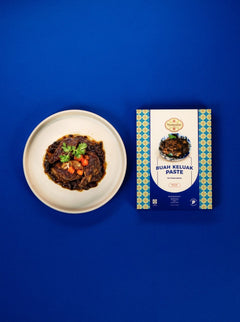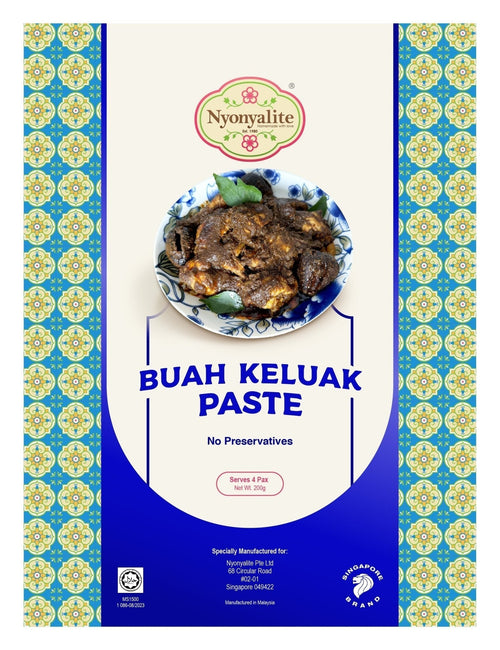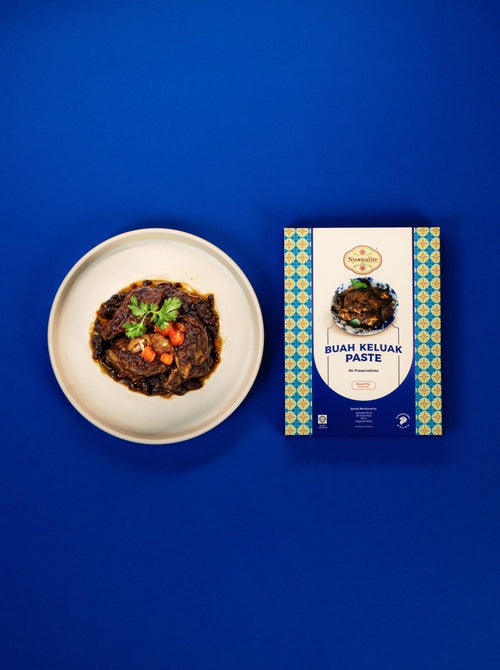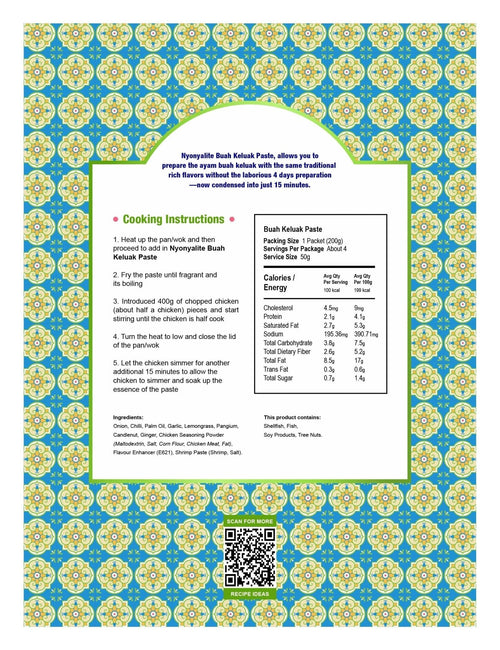满$35即享免费配送。
When it comes to unique culinary delights, Southeast Asia offers a treasure trove of ingredients and flavors. Among these, buah keluak stands out as a fascinating and versatile ingredient, often referred to as the "black diamond" of the region. This blog post delves into the origins, preparation, and culinary uses of buah keluak, shedding light on why this enigmatic ingredient is cherished by chefs and food enthusiasts alike.
What is Buah Keluak?
Buah keluak (also known as 黑果 in Chinese), scientifically known as Pangium edule, is a fruit native to the mangrove swamps of Southeast Asia (Indonesia and Papua New Guinea). The fruit's seeds, which are the main culinary component, are encased in a hard shell and possess a distinctive black hue. The seeds are famously known for their intense, earthy flavor, which adds depth and complexity to a variety of dishes.

A buah keluak on a tree. Source
Historical Significance
Buah keluak has a rich history in Peranakan or Nyonya cuisine. The Peranakans, descendants of Chinese immigrants who settled in the Malay Archipelago, are known for their unique blend of Chinese and Malay culinary traditions. Buah keluak has been a staple in their kitchens for generations, used in iconic dishes such as Ayam Buah Keluak, a rich and flavorful chicken stew that traditionally requires 5 days of preparation.
Preparation: From Toxic to Tantalizing
One of the most intriguing aspects of buah keluak is its preparation. The raw seeds contain hydrogen cyanide, a toxic compound, which makes them inedible without proper treatment. Traditional methods involve burying the seeds in ash for weeks, allowing them to ferment and detoxify. After fermentation, the seeds are thoroughly cleaned and soaked in water for several days before they are ready to be used in cooking.
Culinary Uses of Buah Keluak
Buah keluak's unique flavor profile which seems to a cross of dark cocoa, wine and olives makes it a versatile ingredient in various dishes. Here are some popular culinary uses:
1. Ayam Buah Keluak
Ayam Buah Keluak is perhaps the most famous dish featuring this ingredient. The chicken is slow-cooked in a rich, spicy gravy made from a blend of keluak paste, tamarind, and a medley of spices. The result is a deeply aromatic and flavorful dish that is a cornerstone of Peranakan cuisine.

2. Rawon
A beloved Indonesian beef soup originated from East Java rated by TasteAtlas as the no.2 tastiest soup in 2024. The nutty and earthy flavors of keluak complement the tender beef and aromatic spices, creating a dish that is both comforting and exotic.

3. Natural Flavor Enhancements for Desserts
Buah keluak can be used to enhance the flavors of dark chocolate in desserts such as ice cream or cake.
Nutritional Benefits
Buah keluak is not only delicious but also packed with nutrients. It is an excellent source of vitamin C and high in iron. Additionally, the fermentation process enhances its nutritional profile, making it a wholesome addition to a balanced diet.
Where to Buy Buah Keluak in Singapore?
You can purchase Buah Keluak paste, expertly blended with traditional spices, from our webstore for added convenience. For whole buah keluak, whether unopened or extracted, you can visit popular spots like Tekka Market or Geylang Serai Market.
Conclusion
Buah keluak is a culinary gem that encapsulates the rich cultural heritage and diverse flavors of Southeast Asia. Its unique preparation process and versatile applications in cooking make it a must-try ingredient for adventurous foodies and seasoned chefs alike. Whether you're savoring a traditional Ayam Buah Keluak or experimenting with contemporary recipes, the black diamond of Peranakan cooking promises a gastronomic experience like no other.
You can buy the Nyonyalite Buah Keluak Paste here.


